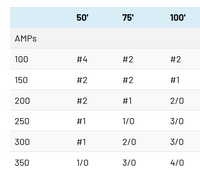EROWATOM
New Member
This is my first post!
I just bought this ECO-Worthy kit and plan to install it in my garage running a fridge and freezer totally off grid.

Over the last few days I had a power consumption meter connected and it turns out, the fridge and the freezer combined use a mere 1.6KWh per day. I understand it is winter in SoCal, but even if the consumption doubles, this system should be enough.
And worst case scenario, the Hybrid Inverter also has a Grid hookup as a backup. Though at the moment I am not planning on using it.
I am pretty good with my electrical stuff, but I had 2 questions:
- Do I need to add a fuse anywhere? Maybe 150A between battery and inverter? And/or a 20A or 25A breaker between the inverter and the outlets?
- Do I need to ground the system? If so, how? Can I just extend the ground wire from a nearby grid-tied outlet? Or do I need a ground rod?
I asked these 2 questions to the techsupport at ECO-Worthy and they said:
- no additional fuses are needed.
- for grounding I should just connect the housing of the inverter to the ground terminal of the inverter.
That just does not sound right to me. Specifically the grounding: I mean I would expect that the housing of the inverter is already connected to the ground terminal internally.
Anyway, I am interested in what the smart people in here have to say.
I just bought this ECO-Worthy kit and plan to install it in my garage running a fridge and freezer totally off grid.

Over the last few days I had a power consumption meter connected and it turns out, the fridge and the freezer combined use a mere 1.6KWh per day. I understand it is winter in SoCal, but even if the consumption doubles, this system should be enough.
And worst case scenario, the Hybrid Inverter also has a Grid hookup as a backup. Though at the moment I am not planning on using it.
I am pretty good with my electrical stuff, but I had 2 questions:
- Do I need to add a fuse anywhere? Maybe 150A between battery and inverter? And/or a 20A or 25A breaker between the inverter and the outlets?
- Do I need to ground the system? If so, how? Can I just extend the ground wire from a nearby grid-tied outlet? Or do I need a ground rod?
I asked these 2 questions to the techsupport at ECO-Worthy and they said:
- no additional fuses are needed.
- for grounding I should just connect the housing of the inverter to the ground terminal of the inverter.
That just does not sound right to me. Specifically the grounding: I mean I would expect that the housing of the inverter is already connected to the ground terminal internally.
Anyway, I am interested in what the smart people in here have to say.




